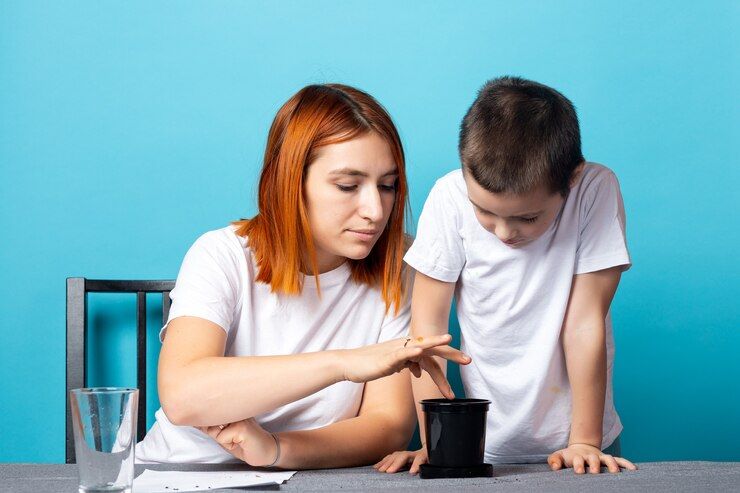Patience is a skill that takes time to develop, especially for kids. Whether you’re finishing a phone call, cooking dinner, or trying to get out the door, your child has likely said, “Hurry up!” or “I need you now!”. Teaching kids patience isn’t just about getting through the moment but it is about helping them build emotional resilience.
Here is how you can navigate those “wait for me” moments with empathy and love.
Why Patience is Important for Kids
Patience helps children develop emotional control, problem-solving skills, and empathy. When kids learn to wait, they also learn to manage frustration and understand that their needs will be met, even not immediately.
While waiting can feel difficult for young children, the good news is that patience can be taught through everyday experiences.
Acknowledge Their Feelings
When your child is struggling to wait, start by recognizing their emotions. Instead of saying, “Just be patient!” try, “I know it’s hard to wait, and I appreciate you trying.” Validating their feelings helps them feel heard and teaches them to manage frustration without melting down.
Set Realistic Expectations
Waiting isn’t easy for young kids, and expecting them to be perfectly patient isn’t realistic. Start with small, achievable goals. Praise their efforts when they manage to wait, even for just a short time. Patience grows over time, and with consistency, your child will get better at it.
Use Visual or Time-Based Cues
Young kids don’t fully grasp the concept of time, so using simple cues can help them understand waiting.
- Set a time: “When the timer beeps in five minutes, I’ll be ready.”
- Use a countdown: “Let’s count to 20 together while I finish this.”
- Create a waiting jar: Fill a jar with small objects (like marbles) to show progress over time.
Giving kids a concrete way to measure waiting makes the experience easier.
Teach Through Play
Games are a fun way to build patience skills. Try:
- Red Light, Green Light: It will help kids practice self control and wait for a cue.
- Board Games: Taking turns teaches patience in a natural way.
- Cooking Together: Watching food bake is a great waiting exercise.
Turning waiting into a game makes the lesson more enjoyable.
Embracing the ‘Wait for Me’ Moments
Teaching kids patience takes time, but every small step counts. By validating their feelings, using cues, making waiting fun, and setting realistic expectations, you can help them develop a life skill that will benefit them forever.

Want Your Child To Know More About Patience?
Give your child a copy of I Wish My Mommy Was an Octopus by Erin Shular. The story captures the common childhood longing for attention while also showing the love behind every busy moment.
Grab your copy today and enjoy this heartfelt read with your child!




